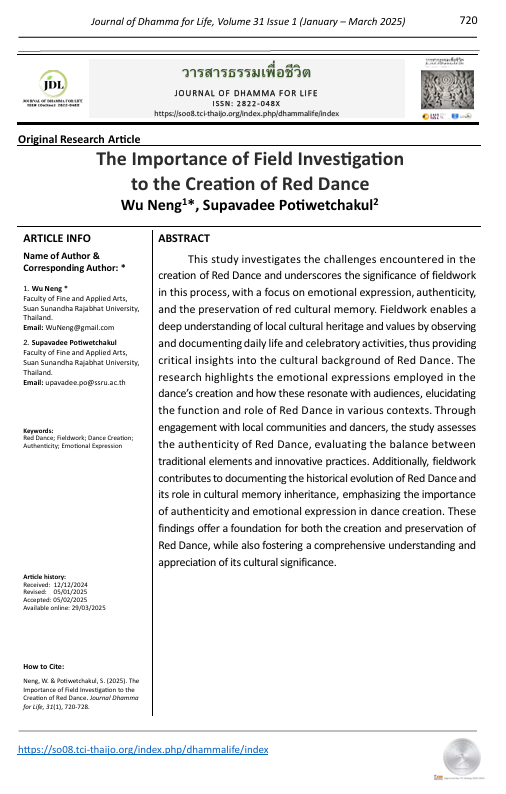The Importance of Field Investigation to the Creation of Red Dance
Main Article Content
Abstract
This study investigates the challenges encountered in the creation of Red Dance and underscores the significance of fieldwork in this process, with a focus on emotional expression, authenticity, and the preservation of red cultural memory. Fieldwork enables a deep understanding of local cultural heritage and values by observing and documenting daily life and celebratory activities, thus providing critical insights into the cultural background of Red Dance. The research highlights the emotional expressions employed in the dance’s creation and how these resonate with audiences, elucidating the function and role of Red Dance in various contexts. Through engagement with local communities and dancers, the study assesses the authenticity of Red Dance, evaluating the balance between traditional elements and innovative practices. Additionally, fieldwork contributes to documenting the historical evolution of Red Dance and its role in cultural memory inheritance, emphasizing the importance of authenticity and emotional expression in dance creation. These findings offer a foundation for both the creation and preservation of Red Dance, while also fostering a comprehensive understanding and appreciation of its cultural significance.


